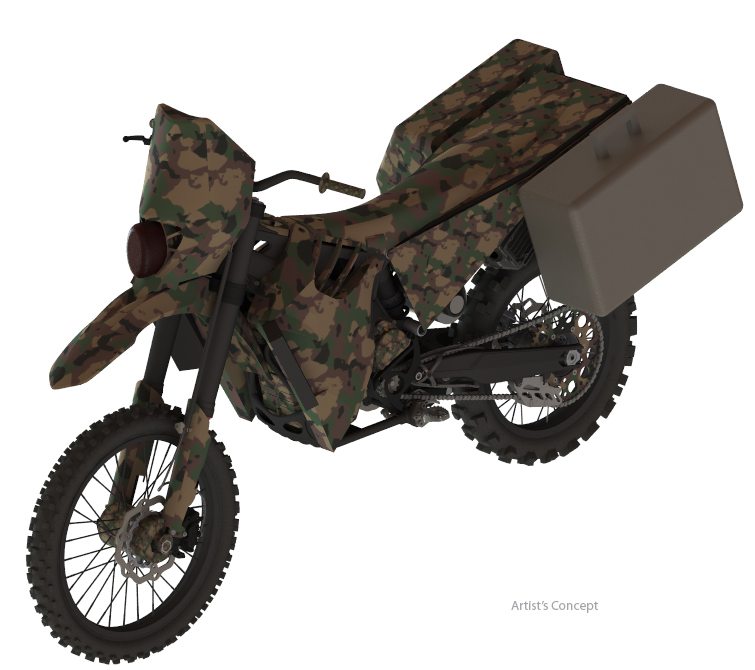Logos Technologies has received a Phase II Small Business Innovation Research (SBIR) award from DARPA (the Defense Advanced Research Projects Agency) to continue development of the SilentHawk military motorcycle in partnership with California’s Alta Motors (formerly BRD).
When fully matured, SilentHawk would allow small, distributed military teams to move long distances quickly and stealthily across harsh enemy terrain, meeting DARPA’s expectations for high performance, efficiency and military utility. The prototype would combine Alta’s existing RedShift MX electric motocross bike with Logos Technologies’ proven quiet, multi-fueled hybrid-electric power system, developed for a separate unmanned aerial vehicle program.
“Quiet, all-wheel drive capability at extended range in a lightweight, rugged, single-track vehicle would support the successful operations in extreme terrain conditions and contested environments,” said Wade Pulliam, manager of advanced concepts for Logos Technologies. “This award enables us to continue to execute a fast-paced development effort that takes advantage of our team’s prior work, superior technical approach, and extensive experience.”
During Phase I, which began in February 2014, Logos and Alta conducted extensive performance testing on the RedShift MX in multiple terrains and riding conditions to help understand the requirements for an off-road military motorcycle. Using this data, Logos demonstrated the suitability of its hybrid-electric system to meeting actual off-road power requirements. The result of Phase I was a preliminary design, backed by significant testing and modeling, which Logos intends to turn into a prototype during Phase II. With most critical requirements of the system already demonstrated, the Logos-Alta team plans to proceed with an aggressive Phase II program plan, with the goal of developing and testing the first operational prototype in only 18 months.
“An innovative design approach, including a unique field-swappable power system concept, will allow unprecedented customizability of the bike while still meeting and exceeding the government’s challenging requirements,” added Pulliam. “We also believe that the system resulting from this second phase of the program would have applicability to other ground vehicle systems beyond motorcycles.”
[foogallery id=”61341″]











